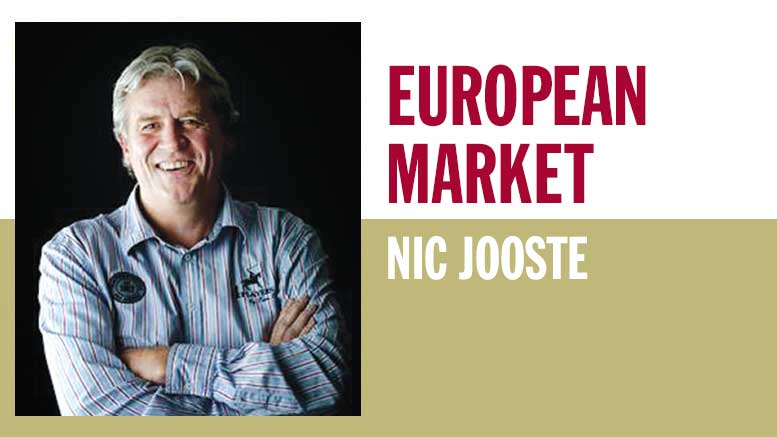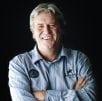Produce And Agriculture Are Just Part Of Dutch DNA
November 2, 2018 | 4 min to read
The Netherlands, despite its small size, has become a global leader in agriculture and horticulture, with 2017 exports nearing 100 billion euros. Historically, its trading prowess began in the 1500s, evolving into a highly competitive agribusiness model through innovative practices like the fluyt ships and wind-driven sawmills. Today, the Dutch focus on sustainability and productivity to tackle future food demands, showcasing innovations on family farms and corporate endeavors alike.

Originally printed in the November 2018 issue of Produce Business.
The saying goes: ‘God made man, the Dutch made Holland.’ Over centuries, almost half of the country was reclaimed from the sea by using clever solutions (such as the beautiful windmills that can be seen all over the country) to pump away water, delivering to the Dutch fertile land on which farms could thrive.
Today, Dutch agriculture and horticulture is one of the icons of the modern world. The figures are staggering. In 2017, Dutch exports of agricultural goods amounted to nearly 100 billion (including agriculture-related goods). Companies such as Duijvestein Tomatoes, Koppert Biological Systems and Rijk Zwaan Seeds dominate the world of agricultural innovation. The Netherlands is the world’s No. 2 exporter of food as measured by value, second only to the United States. Yet, at 270 times smaller than the United States, the Netherlands can only be classified as extremely tiny. From the outside, it seems as if the country has no resources that are necessary for large-scale agriculture. What is the secret of the Dutch’s success?
The fact is the Netherlands has agriculture – and agricultural trade – in its DNA. No matter where in the world of fresh produce you go – or who you speak to – the Dutch feature somewhere in the supply chain.
This tiny, flat northern European country has been one of the world’s leading trading nations for centuries. Professor Jan de Vries calls the economic history of the Netherlands from 1500 to 1800 the world’s first ‘modern’ economy. Already in the early 1500s, the country created a true crossroads of trade connections for itself between east and west, north and south. The urban economies along these trade routes stimulated rural communities to become involved in all kinds of agrarian activities. Since then, highly sophisticated and productive Dutch agribusiness complexes have been the result.
But there is more to it than meets the eye, especially in terms of innovation. Around the mid 1600s, the Dutch saw the world was in need of products from far away. Instead of doing what everybody else was doing (building ships that could be converted to warships in case of war), the Dutch created a new-style merchant ship known as the ‘fluyt’ (the flute). It was brilliant in its simplicity. Designed to carry twice the cargo and able to be handled by a smaller crew, it was one of the first examples of the Dutch lowering supply chain costs in order to be more competitive.
The Netherlands is the world’s No. 2 exporter of food as measured by value, second only to the United States. Yet, at 270 times smaller than the United States, the Netherlands can only be classified as extremely tiny.
But the Dutch immediately saw more opportunities. The economic boom of the 1700s had led to an explosive growth in investments available for industries related to trade. Inventor Cornelis Corneliszoon designed the wind-driven sawmill, which significantly increased productivity in ship building. This lowered the cost of transportation for Dutch merchants even further. In addition to such productivity-enhancing investments, they also started harnessing wind power and using heat energy from peat as an industrial fuel. These factors relating to cost-saving and productivity gave the Dutch major competitive advantage. By 1670, the Dutch shipped 568,000 tons per year —about half the European total. With this solid edge, the Dutch merchants fanned out across the globe, sourcing new products and supplying new markets. The Dutch became the world champion in trading.
The Dutch went even further in their early thinking. As one of the earliest known investors in human capital, the Dutch managed to raise labor productivity above the levels prevailing in other European countries. In the mid-17th century, the agricultural sector, employing less than 40 percent of the labor force, could already be a net food exporter. Nominal wages were the highest in Europe. In the open economy of the time, the Dutch realized that growth could only be sustained by focusing on productivity.
Today, productivity and innovation are part and parcel of the DNA of the Dutch. The country understands that it needs to build on its long food history in order to remain competitive. In addition, the Dutch are committed to play a significant role in feeding the world. Ernst van den Ende, managing director of the Wageningen University’s Plant Sciences Group, says the following: ‘Put in bluntly apocalyptic terms, the planet must produce more food in the next four decades than all farmers in history have harvested over the past 8,000 years.’
From this perspective, the Dutch food, agriculture and horticulture sector has become highly innovative, with value-added all along the food chain. Continuous adoption of innovation has permitted the Dutch to reach high levels of productivity, particularly at farm level. The Dutch government continues to stimulate improvements in technologies and know-how in order for farmers to pursue sustainable productivity growth. In addition, the Dutch system of agricultural innovation is focused on generating the new ideas that are needed to face future challenges, including those linked to climate change.
At every turn in the Netherlands, the future of sustainable agriculture is taking shape — not only in the boardrooms of big corporations but also on thousands of modest family farms. Visitors to the Amsterdam Produce Summit would be well-advised to pay a visit to some of these farms and companies where amazing agricultural innovations are taking place.
 Nic Jooste is the director of marketing and CSR at Cool Fresh International, a Rotterdam-based global marketing organization for fresh produce.
Nic Jooste is the director of marketing and CSR at Cool Fresh International, a Rotterdam-based global marketing organization for fresh produce.
1 of 17 article in Produce Business November 2018

